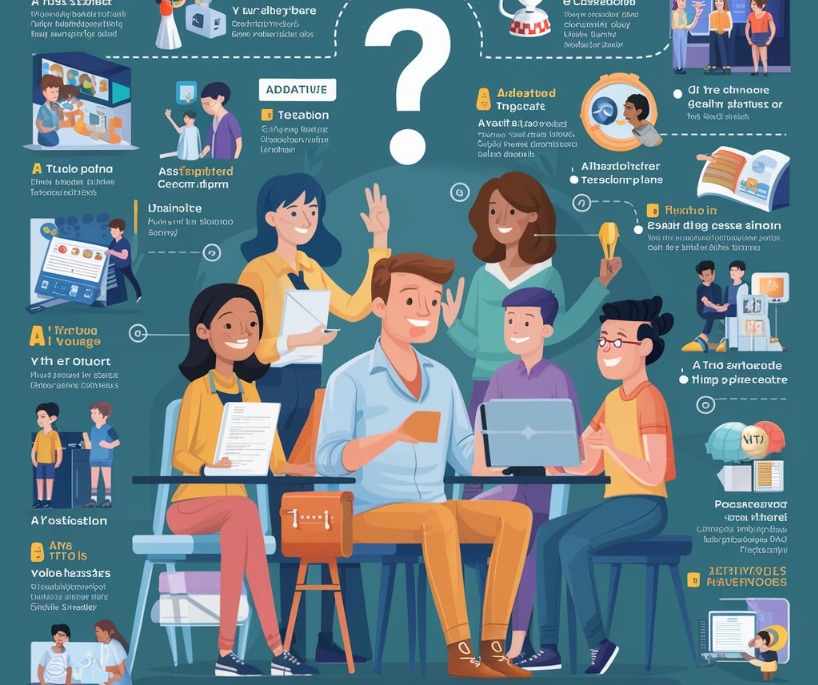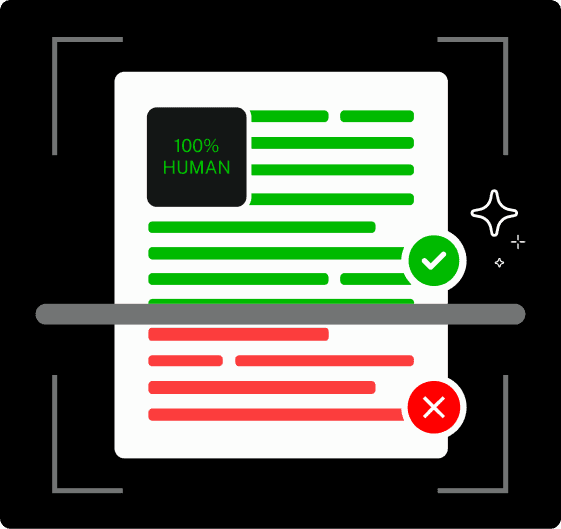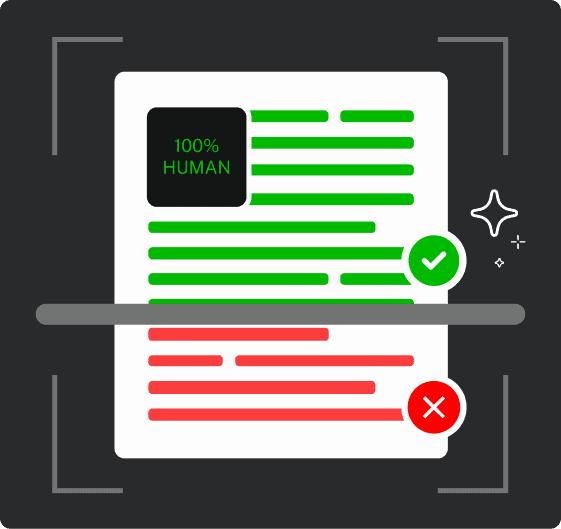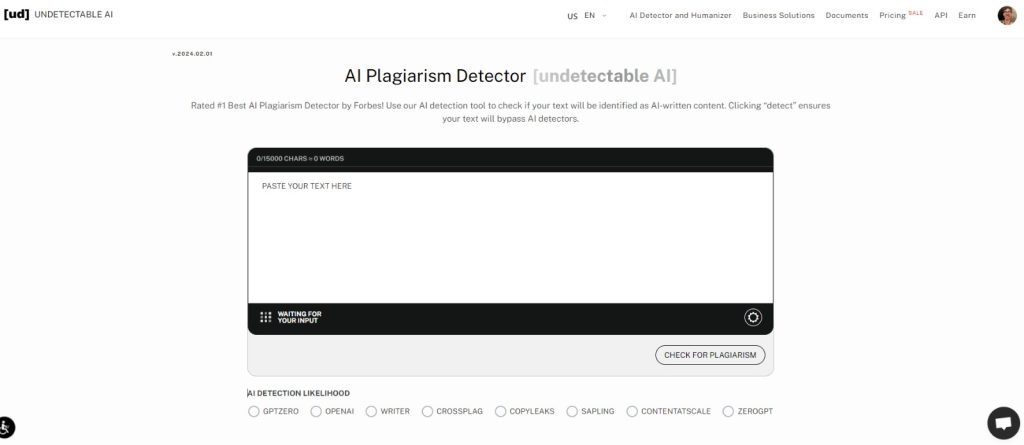Teaching is one of the most stressful professions—and it’s easy to see why.
Teachers juggle so many responsibilities to make sure that their students receive a quality education, which requires a huge amount of dedication and effort.
But, as technology continues to evolve, so too do the tools available to educators.
Artificial intelligence (AI), in particular, is making a strong impression.
AI tools like ChatGPT can free up valuable time for teachers to improve their approaches.
Around four in ten teachers already plan to integrate AI in classrooms sometime this school year.
While its popularity and benefits are clear, many teachers are still quite unfamiliar with the impact of AI on education.
If you haven’t looked into AI’s potential, now’s the perfect time to start. And we’re here to help.
We’ve put together a list of tips on how teachers can effectively use AI in classrooms.
These should be able to let you use AI to make your teaching more impactful—all while still saving time.
How Can Teachers Use AI in the Classroom?

AI in education has exciting possibilities for both teachers and students. So, how does AI impact education? It can be both a good and a bad thing.
On the positive side, AI can boost learning and productivity. But, one in five teachers reports a lack of clear AI policies in their districts.
When used irresponsibly, AI could actually compromise the integrity of education.


Never Worry About AI Detecting Your Texts Again. Undetectable AI Can Help You:
- Make your AI assisted writing appear human-like.
- Bypass all major AI detection tools with just one click.
- Use AI safely and confidently in school and work.
Schools need to establish clear guidelines and provide proper training for educators to take full advantage of AI.
When implemented correctly, AI can revolutionize the classroom.
It can make learning more efficient, personalized, and accessible for all students.
Here are some of the best ways teachers use AI in classrooms to support their students and streamline their work.
1. Classroom Management
Classroom management is important to the whole teaching process. It organizes and maintains a productive learning environment.
It can include routine tasks like monitoring student behavior, tracking attendance, and making sure that lessons run smoothly.
Manually handling all these responsibilities can be challenging—especially in larger classes where keeping an eye on everything is such a tough job.
AI can ease the burden of classroom management by automating most of these tasks.
For instance, AI-powered systems can automate attendance taking. Both educators and students can receive individual logins and passwords to easily mark and track daily attendance, all in one place.
This system saves valuable class time and can uncover useful patterns that help monitor student performance and keep students safe.
And this is just one way to use AI in classrooms.
AI can organize different classroom activities, from scheduling lessons and assignments to test planning.
You can be more confident that everything runs on schedule and the class stays on track.
2. Automated Grading
Grading is another fundamental part of teaching. It gives feedback and assesses your students’ understanding.
Grading students has always been manually done. Teachers need to review each and every piece of work and give their scores.
This is incredibly time-consuming and can sometimes lead to inconsistencies or biases.
AI can change the grading process by making it faster and more consistent.
For example, AI tools can quickly assess multiple-choice exams, giving teachers extra time to focus on complex tests.
Teachers can also use AI to quickly check for grammar in essays and research papers so they only need to assess the context.
As a precaution, teachers should always review AI assessments when used on more subjective assignments to ensure fairness and accuracy.
Having a well-rounded AI and human approach maintains the quality of grading while still being able to leverage the advantages of using technology.
3. Personalized Learning
Some students prefer a personalized approach, which tailors learning to each student’s unique needs, strengths, and interests.
Unlike the traditional methods, which often use a one-size-fits-all approach, personalized learning provides a customized experience for the student.
This way of inclusive learning can be especially helpful for students who might struggle with conventional teaching methods or for those who need more challenging materials.
AI plays an important role in facilitating personalized learning by analyzing student performance, preferences, and learning styles. It allows you to make effective individualized learning plans.
For example, AI can recommend specific resources or activities that align more with a student’s strengths and areas for improvement to keep engagement high.
This tailored approach, in turn, makes learning more enjoyable.
Personalized learning features, such as giving students choice and voice in their education, are positively linked to student happiness.
4. Content Creation
You’ll need some engaging classroom content, but that can be a lot of work.
Teachers often spend hours making lesson plans, coming up with fun activities, and preparing materials.
Without AI, this task could be even more challenging, requiring lots of manual effort and creativity.
AI can make content creation much easier. AI tools can analyze curriculum needs and suggest relevant activities.
These tools can also create basic quizzes, interactive exercises, and other useful multimedia resources.
All of these combined save teachers time. As mentioned, AI can also tailor content to meet the diverse needs of students.
By automating these processes, AI can allow teachers to focus more on teaching and less on preparing materials.
This makes the classroom experience richer and highly engaging for students.
5. Language Translation and Learning

Language connects us all, but it can be a serious barrier if students don’t understand what they are taught.
Nearly half of school-aged children around the world still lack access to education in a language they understand.
AI can help break down these language barriers. AI-powered translation tools can instantly translate educational materials into different languages.
They ensure all your students can access the content they need and are especially useful in classrooms with students who speak multiple languages.
Without AI, teachers would need to manually translate materials and address each student’s language needs individually.
AI can also support language learning by offering personalized games and activities, like speech recognition and vocabulary practice activities.
6. Predictive Analytics
Predictive analytics uses data to make educated guesses about possible future outcomes.
In education, this means analyzing student data to identify trends that work (and don’t work) and making informed choices to support students.
AI is excellent at predictive analytics.
Rather than doing all the work manually, AI can process large amounts of data in a very short amount of time to spot patterns like grades, attendance, and engagement.
This lets educators foresee potential issues, like students who have been struggling in class or are at a higher risk of dropping out.
With these insights, teachers and administrators can take early action to help students out.
Predictive analytics also aids in planning and fine-tuning lesson plans and resources based on real data, which could improve overall student performance.
7. Fact-Checking and Plagiarism Detection
Plagiarism is a serious and quite common concern in school.
With AI tools becoming even more popular, there’s also an increased risk of AI plagiarism.

This happens because AI can generate text that’s too similar to existing sources, sometimes without giving proper citations, and this is what leads to unintentionally plagiarizing someone else’s work.
Plagiarism detection tools like Undetectable AI can tackle this issue with ease.
It can scan large amounts of text and compare it against a huge database of published sources to find similarities within just seconds.
Rated as one of the best AI detectors by Forbes and already used by millions, Undetectable helps you ensure that academic work stays honest and credible.
AI also isn’t totally perfect and might even create inaccurate or false information.
It generates responses based on prompts, and it sometimes prioritizes the prompt over accuracy.
That’s why it’s a must to fact-check AI-generated content to make sure it’s correct and reliable.
Make Undetectable your go-to AI detector and plagiarism checker, in addition to your existing plagiarism and fact-checking tools, so you’re covered all around.
FAQs about AI in Classrooms
How will AI impact education?
AI will transform education by making routine tasks easier. It can streamline making assessments, help with content creation, and support classroom management, making education more efficient. The key is to use AI responsibly and balance it with human oversight to avoid spreading misinformation and reducing student critical thinking.
What are the pros and cons of AI in education?
The pros of AI in education include increased efficiency, personalized learning opportunities, and enhanced data analysis for better decision-making. However, the cons involve potential inaccuracies, the risk of over-reliance on technology, and challenges when it comes to maintaining academic integrity.
How can educators and institutions address the challenges of AI in education?
Educators and institutions can address AI challenges by implementing clear policies. They should provide training on responsible AI use and ensure that AI tools complement rather than completely replace human judgment. They should also regularly fact-check and maintain a balance between AI and traditional teaching methods for effective integration.
Conclusion
Using AI in classrooms can truly impact learning.
By embracing various AI tools, teachers can streamline their routine tasks, tailor lessons to meet individual needs, and make the classroom much more engaging – while still getting to save lots of time.
This gives educators some much-needed freedom to focus on improving the overall education experience.
Just remember to use these AI tools properly. Balance their advantages with your own insights to keep learning both effective and authentic.
To ensure accuracy and maintain academic integrity, rely on Undetectable AI for top-notch AI detection and plagiarism checking.
With the right approach and tools, AI can be a powerful ally in creating a more dynamic and supportive educational environment.
